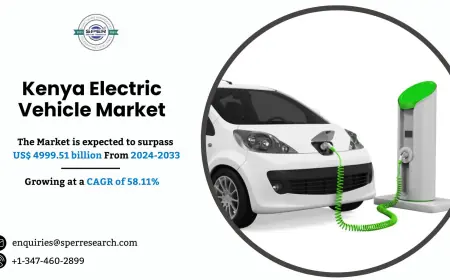How AI Oracles Are Disrupting Traditional Off-Chain Data Feeds in Web3
AI oracles are transforming Web3 by making smart contracts smarter. Discover how AI disrupts data feeds and redefines smart contract development services.
In the expanding universe of Web3, smart contracts are considered the foundation of decentralized applications. Their automated and self-executing nature enables trustless transactions and permissionless innovation. However, smart contracts have a fundamental limitation—they cannot access data from the external world on their own. This gap has historically been filled by oracles, which act as bridges between the blockchain and real-world data. In 2025, the traditional model of oracles is being upended by a new force: artificial intelligence.
AI-powered oracles represent a profound shift in how external data is sourced, validated, and used within smart contracts. Unlike traditional oracles that simply fetch predefined data from APIs or off-chain feeds, AI oracles interpret, verify, and even predict off-chain events using advanced machine learning models. These intelligent systems make Web3 infrastructure significantly more responsive, reliable, and autonomous.
This disruption is reshaping the services offered by smart contract development company many of which now include AI oracle integration, AI inference engine development, and intelligent contract logic design. The shift not only enhances what smart contracts can do—it fundamentally transforms how developers and users interact with real-world data on the blockchain.
The Traditional Oracle Problem in Web3
Since smart contracts cannot natively access external systems, oracles have been a vital component in decentralized ecosystems. They feed smart contracts with real-world information such as market prices, weather updates, sports results, and identity verification. This allows smart contracts to act on conditions that exist outside the blockchain.
The traditional oracle model, while functional, has faced persistent challenges. Centralized oracles introduce trust assumptions, which contradict the decentralized ethos of blockchain. Even decentralized oracle networks can be slow to adapt, vulnerable to manipulation, and expensive when dealing with high-frequency or complex data. Moreover, traditional oracles are passive—they deliver data as instructed but lack the intelligence to interpret data quality, detect anomalies, or respond to uncertain conditions.
Smart contracts that rely on these oracles often suffer from rigid logic. For example, a contract might liquidate a loan based on a single price feed without understanding broader market volatility. It may trigger insurance payouts without verifying if the event actually occurred or was an anomaly. This leads to inefficiencies, false positives, and exploitable vulnerabilities.
The Rise of AI Oracles
AI oracles represent a new generation of data systems for smart contracts. Rather than serving as simple conduits for raw data, these oracles interpret context, clean noisy inputs, detect patterns, and even make predictive assessments. They do this by leveraging machine learning, natural language processing, computer vision, and anomaly detection techniques.
AI oracles are capable of ingesting multiple data sources simultaneously and triangulating the most reliable outcome. For instance, instead of relying on one price feed for ETH/USD, an AI oracle can compare data across dozens of exchanges, filter out anomalies, adjust for latency, and provide an optimized median or even a future estimate based on predictive modeling.
In 2025, the sophistication of these AI models has grown exponentially. Some AI oracles specialize in DeFi market intelligence, while others focus on legal document analysis, weather modeling, supply chain verification, or biometric authentication. These models are often trained on extensive off-chain datasets and optimized to operate on blockchain-compatible runtimes.
AI oracles not only feed data but also feed insight, which changes the scope and ambition of what smart contracts can do. In response, smart contract development services have expanded to include AI model integration, oracle optimization, and intelligent logic design.
Smart Contract Development in the Age of AI Oracles
The integration of AI oracles into smart contracts requires a new kind of developer expertise. Traditional smart contract development focused on writing deterministic logic that responded to clear-cut inputs. In contrast, AI-enhanced contracts must work with probabilistic, contextual, or inferential data.
Smart contract development companies are now investing in data science, AI infrastructure, and cross-domain knowledge to bridge this gap. Their services involve designing smart contracts that can respond to thresholds, confidence scores, trends, and predictions—rather than just binary outcomes.
For example, an insurance smart contract may not trigger payment based on a simple API report of a flood. Instead, it might analyze satellite imagery, rainfall data, and social media sentiment through an AI oracle to determine whether a flood occurred, where it happened, and how severe it was. The contract logic must be robust enough to interpret this multi-layered input.
Smart contract developers working with AI oracles must consider model validation, performance variance, on-chain and off-chain compute compatibility, and oracle availability. They must also build in fallback mechanisms in case of AI model failure or disagreement between multiple oracles.
This complexity is now a standard part of modern smart contract development services, which have matured beyond coding and now encompass AI inference engineering, data quality assurance, and AI-governed smart contract auditing.
Use Cases Redefined by AI Oracles
In decentralized finance (DeFi), AI oracles enable more accurate pricing, risk modeling, and volatility detection. Rather than triggering liquidations based on lagging price feeds, smart contracts can incorporate real-time AI-generated risk metrics. These might consider price movements, trade volumes, funding rates, and historical patterns to execute more intelligent liquidation strategies.
In decentralized insurance, AI oracles can analyze weather satellite data, crop imagery, and climate models to verify events and assess damages. This reduces fraud and significantly improves claims processing accuracy and speed. Smart contracts in this space are evolving into multi-layered logic trees capable of interpreting nuanced data with AI assistance.
In gaming and NFTs, AI oracles verify off-chain actions, game progress, and user-generated content before triggering rewards or game logic. This creates more immersive and fair player experiences.
In supply chain applications, AI oracles process IoT sensor data, GPS logs, and scanned documents to verify the origin, status, and condition of goods. Smart contracts can then trigger payments, taxes, or certifications without human intervention.
These use cases were either impossible or highly inefficient with traditional oracles. Now, smart contract development companies are not only building these applications but also training domain-specific AI models, integrating oracle frameworks like Chainlink Functions or Flux, and deploying hybrid smart contract architectures.
Decentralized AI Oracles vs. Centralized AI Systems
While AI brings immense potential to oracle systems, it also introduces concerns around centralization. AI models often require off-chain computation, extensive datasets, and specific hardware environments. If an AI oracle becomes a central point of failure or control, it defeats the purpose of decentralization.
To address this, decentralized AI oracle networks are emerging. These networks distribute the training, execution, and verification of AI models across multiple nodes. Each node contributes compute resources, runs inference jobs, and reaches consensus on outputs. Models are versioned, signed, and audited to ensure transparency.
Smart contract development services are now integrating with decentralized compute platforms like Bittensor, Gensyn, or Aleph.im, which provide AI inference as a service. Developers can build smart contracts that call decentralized AI models and validate outputs using cryptographic proofs or multi-node voting.
This hybrid approach preserves decentralization while unlocking the analytical power of AI. Development firms now offer specialized services around decentralized AI integration, including model deployment, permissionless oracle access, and governance tooling for AI oracle communities.
Model Verification and Security Considerations
AI models can be powerful but are not infallible. A faulty model, poisoned dataset, or biased algorithm can introduce significant risks into smart contract systems. As AI becomes a critical part of the blockchain trust stack, ensuring the validity of AI outputs is a top priority.
Smart contract development companies are adopting multiple strategies to address this. They use zero-knowledge proofs to verify that AI inferences were conducted correctly without revealing sensitive data. They build redundant oracle layers where multiple models are queried, and results are compared or weighted. They also implement AI audit trails, allowing DAOs or users to review how and why a certain inference was made.
In addition, some services provide model reputation tracking, where AI oracles build their own performance histories. Smart contracts can then choose to trust or ignore certain models based on their proven reliability. This feedback loop improves the ecosystem over time.
Smart contract development services increasingly offer AI model governance tooling, allowing communities to vote on model updates, reward accurate models, and blacklist underperforming ones. This governance aspect is vital to maintaining transparency and fairness in AI-enhanced Web3 systems.
Legal, Ethical, and Compliance Implications
The integration of AI into oracles raises new regulatory and ethical questions. What happens if an AI oracle provides incorrect data that causes a contract to misfire? Who is accountable—the oracle network, the developer, the model trainer, or the contract owner?
Legal frameworks are only beginning to address these issues. In the meantime, smart contract development companies are taking the lead by implementing ethical AI guidelines, human-in-the-loop systems, and formal accountability protocols. Contracts that use AI oracles may include disclaimers, override mechanisms, or appeal systems where a DAO or external arbitrator can review contested outcomes.
In sectors like DeFi or insurance, regulatory compliance is paramount. Development services now include compliance testing of AI models, ensuring that the data sources and logic paths align with AML, KYC, and other legal standards. They also work with legal experts to document how AI decisions are made, offering transparency to auditors and users alike.
This proactive stance on AI ethics and regulation is not only a competitive advantage but also a necessary evolution of the smart contract development industry, which must now navigate the complexities of AI responsibility alongside code security and performance.
The New Stack: AI Oracles, Data Lakes, and Smart Contracts
As AI oracles become more widespread, the infrastructure behind Web3 is evolving. The new decentralized data stack consists of on-chain smart contracts, off-chain AI engines, decentralized storage, real-time data lakes, and model governance systems.
Smart contract development services are now full-stack data engineering platforms. They design the architecture that connects raw data to AI to on-chain logic, ensuring low latency, security, and scalability.
These firms build middleware that facilitates efficient communication between smart contracts and AI engines. They create SDKs, APIs, and schema standards to help dApps query AI oracles natively. They also optimize gas usage by moving inference-heavy logic off-chain while securing result verification through cryptographic methods.
The result is an ecosystem where smart contracts can access not just facts, but judgment, prediction, and context—unlocking new classes of dApps that can manage investments, interpret user behavior, or enforce dynamic governance.
The Future of AI Oracles in Web3
Looking ahead, AI oracles are likely to become as essential to smart contracts as price feeds are today. Their capabilities will continue to grow as machine learning models become more specialized, efficient, and decentralized.
We will see the emergence of domain-specific AI oracle networks for sectors like health, law, agriculture, logistics, and entertainment. These networks will train and serve models designed to meet the nuanced needs of their industries, governed by DAOs and aligned with open data standards.
Smart contract development companies will evolve into AI-native blockchain consultancies, offering vertical-specific AI oracle strategies. Their services will span model training, smart contract logic, data pipeline design, user education, and ethical AI governance.
AI-powered smart contracts may soon evaluate user intent, adjust their behavior based on risk scores, or dynamically rewrite their own clauses within DAO-approved parameters. This level of contract intelligence is a natural endpoint for the AI oracle revolution.
Conclusion: Intelligence at the Edge of Trust
AI oracles are reshaping the boundaries of what smart contracts can achieve. By replacing static, inflexible data feeds with dynamic, context-aware intelligence, they empower Web3 applications to be more adaptive, reliable, and meaningful.
This transformation is not just technical—it’s philosophical. It challenges us to rethink what it means to trust in a decentralized world. It asks whether machines can not only execute logic, but understand it. And it demands that smart contract developers become data scientists, ethicists, and architects of autonomous intelligence.
In this new era, smart contract development services that embrace AI will lead the way in building responsive, scalable, and intelligent blockchain systems. Their services will be the backbone of an ecosystem where contracts are not just smart, but wise.
What's Your Reaction?
 Like
0
Like
0
 Dislike
0
Dislike
0
 Love
0
Love
0
 Funny
0
Funny
0
 Angry
0
Angry
0
 Sad
0
Sad
0
 Wow
0
Wow
0


















































